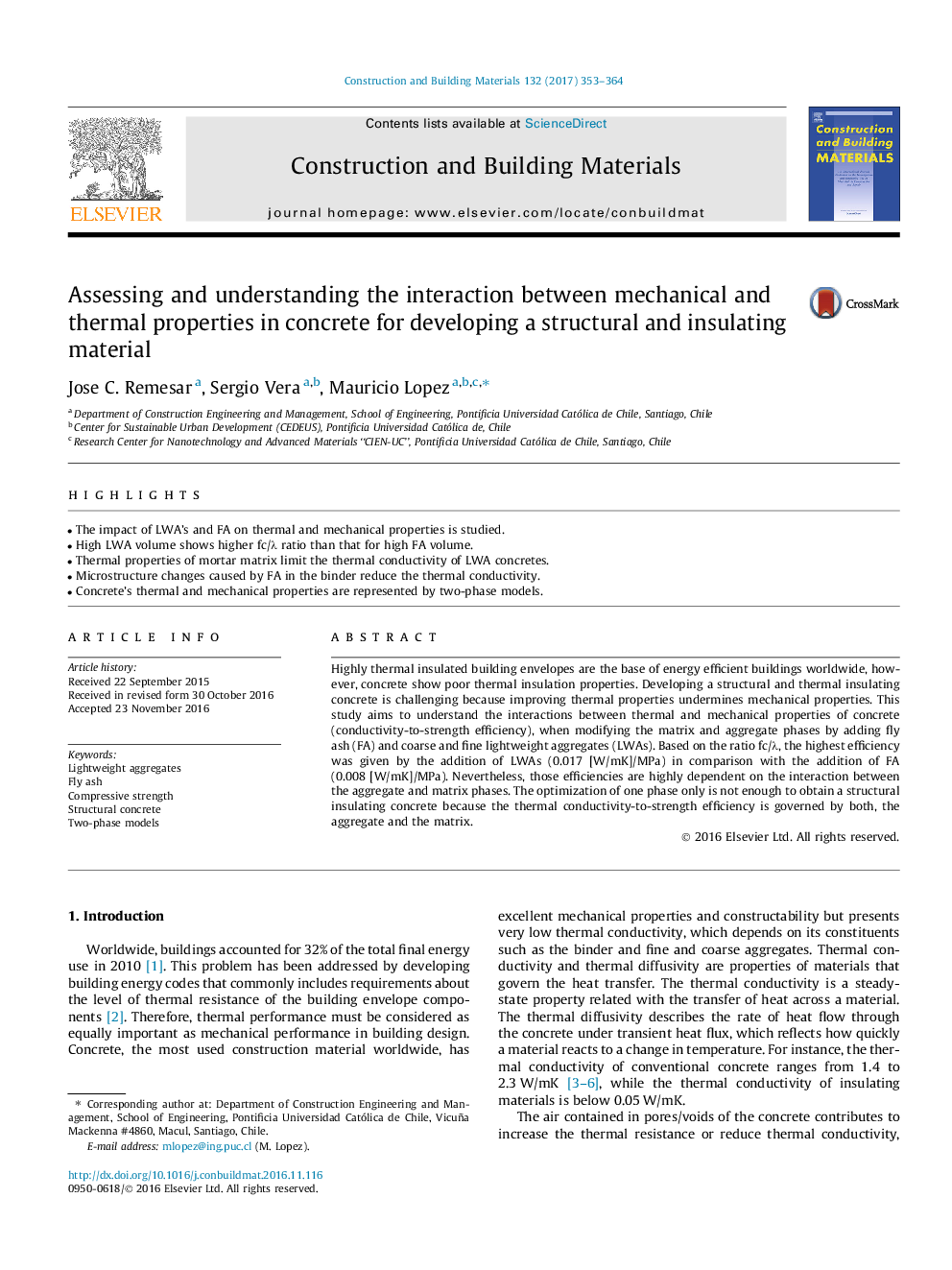| Article ID | Journal | Published Year | Pages | File Type |
|---|---|---|---|---|
| 4913837 | Construction and Building Materials | 2017 | 12 Pages |
Abstract
Highly thermal insulated building envelopes are the base of energy efficient buildings worldwide, however, concrete show poor thermal insulation properties. Developing a structural and thermal insulating concrete is challenging because improving thermal properties undermines mechanical properties. This study aims to understand the interactions between thermal and mechanical properties of concrete (conductivity-to-strength efficiency), when modifying the matrix and aggregate phases by adding fly ash (FA) and coarse and fine lightweight aggregates (LWAs). Based on the ratio fc/λ, the highest efficiency was given by the addition of LWAs (0.017 [W/mK]/MPa) in comparison with the addition of FA (0.008 [W/mK]/MPa). Nevertheless, those efficiencies are highly dependent on the interaction between the aggregate and matrix phases. The optimization of one phase only is not enough to obtain a structural insulating concrete because the thermal conductivity-to-strength efficiency is governed by both, the aggregate and the matrix.
Related Topics
Physical Sciences and Engineering
Engineering
Civil and Structural Engineering
Authors
Jose C. Remesar, Sergio Vera, Mauricio Lopez,
